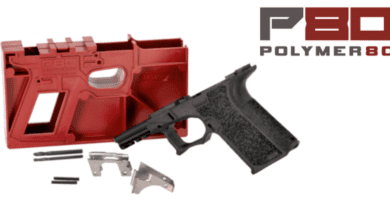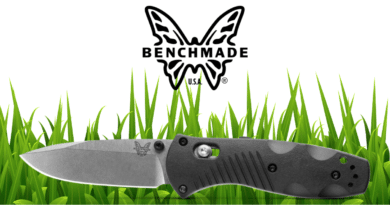Strategic Illumination: Choosing a WML For Pistols & Rifles
When the lights go out and danger lurks, your ability to see could mean the difference between staying safe or facing harm. That’s where a weapon-mounted light (WML) comes into play—they’re essential tools for anyone serious about self-defense or tactical readiness.
However, picking the right WML isn’t always straightforward, with so many options on the market. It can be downright daunting to determine which light best meets your needs.
Did you know that a weapon light isn’t just about brightness? Sure, lumens matter, but factors like beam pattern, candela, and control features are equally crucial in a life-or-death scenario.
This article will shine a light on how to choose an effective WML for both pistols and rifles that complements your firearm setup while enhancing your strategic advantage in low-light conditions.
Get ready to cut through darkness and uncertainty as we illuminate the path toward making an informed decision about your next WML purchase. Keep reading—let there be light!

Key Takeaways
- Weapon Mounted Lights (WMLs) are not just for brightness; they help identify threats and allow you to operate your firearm with both hands.
- Factors like lumens and candela, size, weight, and mounting options are key when selecting a WML that won’t hinder your firearm’s performance.
- For different tactical needs, there’s a choice between compact WMLs, which are great for everyday carry, and full-size versions that provide more features for law enforcement use.
- Rail-mounted, offset mounts, and universal quick-release mounts offer various ways to attach lights to firearms; choosing the right one depends on your specific situation or preference.
- Using a handheld flashlight can be advantageous over a WML in situations where non-threatening identification is essential or when greater maneuverability is needed.
Table of contents
- Key Takeaways
- Understanding Weapon Mounted Lights (WML)
- Factors to Consider When Choosing a WML
- Different Types of WML for Pistols and Rifles
- What WMLs and Handheld Lights Do I Use and/or Recommend?
- Strategic Use of WMLs for Pistols and Rifles
- Why Strobe Is NOT Something I Recommend on a WML
- When to Use a Handheld Flashlight Over a WML
- Fighting in the Dark Isn’t Fun — You Need a Quality WML
- FAQs
Understanding Weapon Mounted Lights (WML)
The use of weapon-mounted lights (WML) serves the important purpose of providing illumination in low-light or dark environments to aid in target identification and engagement. WMLs offer several benefits, including enhanced situational awareness and the ability to disorient potential threats with bright light.
Definition and purpose of WML
A Weapon Mounted Light (WML) is essentially a flashlight designed to attach directly to your firearm. This crucial piece of gear allows shooters to spotlight targets in low-light conditions without needing a separate handheld light.
It’s not just about visibility; it also frees up one hand, which can be critical when you need utmost control over your weapon during high-stress scenarios.
Related Article: You Need a Specific Home Defense Weapon for Use at Night
Utilizing a WML means you can identify threats quickly and accurately, which is essential for both law enforcement and personal defense situations. These lights are built tough to withstand the recoil of firing and often feature both constant and momentary modes so that you can use them tactically, depending on the situation at hand.
With options like strobe functions available on some models, they offer more than just illumination; they provide a tactical advantage when seconds count.
Benefits of using a WML
Having a weapon mounted light (WML) on your firearm gives you a clear advantage in low-light situations. It aids in the positive identification of threats, preventing tragic misidentifications that can occur in the dark.
With a WML, you have both hands free to operate your pistol or rifle more effectively and maintain better control during high-stress scenarios. A reliable WML also ensures that aiming is consistent whether it’s day or night—your point of aim and illumination source move together as one unit.
Related Article: Modlite OKW — Illuminating the Future of Weapon Lights
Weapon-mounted lights come equipped with features designed for real-world use; quick attach-detach mechanisms allow for rapid installation or removal without tools. Certain models like the Surefire Scout and Cloud Defensive Rein offer intuitive controls that enable swift activation while maintaining your grip on the weapon.
These lights provide robust construction capable of withstanding recoil and rough handling, which could otherwise disable less durable equipment. Moreover, choosing a model with a lockout button prevents accidental activation, conserving precious battery life when every second counts.
Factors to Consider When Choosing a WML
When choosing a WML, it’s essential to consider factors such as lumens and candela, size and weight, and mounting options. These factors will impact the effectiveness of the WML in different scenarios.
1. Lumens and candela
Lumens measure the total amount of light your WML emits, giving you a broad idea of its brightness. The higher the lumens, the more intense the beam illuminates your surroundings, which can be crucial in a self-defense scenario where identifying a threat quickly could save lives.
But lumens aren’t everything; candela counts, too. This unit gauges light intensity at its brightest point, showing how far it will throw downrange to pinpoint exact locations or targets in darkness.
Selecting a weapon-mounted light with an optimal balance between lumens and candela ensures that not only is your immediate area well-lit, but you also achieve significant reach with your beam.
A high-lumen device may flood an area with light yet lack focus for distant objects, while one with impressive candela might shine further but provide insufficient peripheral illumination—a tactical disadvantage when scanning an environment for potential dangers.
Related Article: Z-Bolt Blazer LED & LEP Lights — 315,000 Candela Blasters!
Prioritize finding a WML that offers great value by efficiently combining both measures to suit your unique defense needs.
2. Size and weight
When selecting a weapon mounted light (WML), considering the size and weight is crucial. The WML should not add unnecessary bulk or heft to the firearm, ensuring that it remains easy to handle and maneuver in various situations.
A lightweight and compact WML can be advantageous for quick target acquisition and comfortable handling, especially during extended use. Additionally, the size of the WML should complement the overall balance of the firearm without hindering its performance or becoming an obstruction during storage or holstering.
The weight and dimensions of a WML play a significant role in maintaining optimal functionality without compromising on usability. Avoiding bulky or cumbersome options can enhance mobility while providing reliable illumination when needed most, whether for self-defense scenarios or tactical applications.
3. Mounting options
When choosing a WML for your pistol or rifle, considering the mounting options is crucial. Here are different mounting options to consider:
- Picatinny Rail Mount: This common mounting option allows for easy attachment to firearms equipped with a picatinny rail system, providing a secure and stable fit.
- KeyMod or M-LOK Mount: Some WMLs offer compatibility with KeyMod or M-LOK mounting systems, allowing for versatile attachment to firearms with these specific rail designs.
- Offset Mounts: These mounts position the WML to the side of the firearm, offering flexibility in positioning and allowing accessories such as iron sights or magnifiers to be used alongside the light.
- Universal Quick Release Mounts: These mounts enable rapid attachment and removal of the WML from various firearms, making it convenient for those who need to switch between different weapons quickly.
- Helmet Mounts: Certain WMLs can be mounted on helmets using dedicated helmet mount systems, offering hands-free illumination while keeping your firearm at the ready.
Different Types of WML for Pistols and Rifles
When it comes to choosing a WML for pistols and rifles, there are various options available, including compact and full-size WMLs, rail-mounted WMLs, and handheld WMLs. Each type offers unique advantages based on the specific needs of the user and the context in which they will be used.
By considering factors such as size, mounting options, and intended use, individuals can make an informed choice when selecting a WML for their firearms.
1. Compact vs. Full-Size WML
In personal defense and shooting, choosing between compact and full-size weapon-mounted lights (WML) is not just about size preference. It’s about matching the right tool to the tactical needs and constraints of the firearm’s end use. Here’s a comparative look at both options:
| Feature | Compact WML | Full-Size WML |
|---|---|---|
| Size | Smaller, less obtrusive | Larger, may extend beyond the muzzle |
| Weight | Lighter, adding minimal weight | Heavier, can affect balance/handling |
| Lumens | Lower output, sufficient for close-range | Higher output, better for long-range identification |
| Beam Distance | Shorter reach, focused on the immediate area | Longer reach, illuminates distant threats |
| Mounting Options | Limited due to size, mostly rail-specific | More varied, including ring and rail mounts |
| Use Cases | Ideal for concealed carry and home defense | Better suited for tactical operations and law enforcement |
| Battery Life | Shorter due to size constraints | Longer due to larger battery capacity |
| Accessibility | Simple operation, less complex features | More features, potentially more complex controls |
| Price | Generally more affordable | Price reflects additional features and power |
Understanding the interplay between size, power, and operational needs drives informed decisions for self-defense and tactical applications. Compact WMLs streamline pistols for everyday carry, while full-size options offer robust capabilities for more demanding scenarios. Your mission dictates your choice—choose wisely.
2. Rail-mounted WML
Rail-mounted WMLs are a popular choice for firearms enthusiasts due to their versatility and ease of use. These lights attach directly to the rail of your pistol or rifle, providing a seamless integration that doesn’t add unnecessary bulk.
When choosing a rail-mounted WML, consider factors such as lumens and candela output for effective illumination, as well as the mounting options available for compatibility with your firearm.
The compact design of rail-mounted WMLs ensures they don’t interfere with your grip or handling while offering reliable lighting in low-light environments.
Related Article: PHLster ARC — Enhanced WML Paddles for Streamlight TLR Series
For self-defense purposes, a rail-mounted WML provides the advantage of targeting potential threats accurately without holding a separate flashlight. In high-stress situations, having both hands free while maintaining proper aim is crucial for personal safety and protection.
What WMLs and Handheld Lights Do I Use and/or Recommend?
Below are a few of my favorite WMLs and handheld flashlights based on what I have purchased or used.
Granted, only you know what type of light best fits your wants and needs, but I have laid out several different options with various features and functions, such as high lumen, high candela, varying sizes, etc.
Here are my top picks and favorites:
WML
- SureFire Scout Light Pro
- SureFire X300 Turbo
- Cloud Defensive REIN
- Z-BOLT Blazer LEP
- Streamlight ProTac 2.0
- Streamlight TLR-1 HL
- Inforce WMLX
Handheld Light
- SureFire Stiletto Pro
- SureFire EDCL2-T
- Cloud Defensive MCH HC
- Z-BOLT Blazer LEP Flashlight
- Streamlight ProTac HL
- Streamlight ProTac 2.0
- Streamlight Wedge XT
For what it’s worth, the Z-BOLT Blazer LEP is the most insane WML I’ve ever seen. I swear it could blind the sun. The candela is insane, and from testing with friends, we’ve yet to find a distance it can’t reach out and touch. That said, if you’re running CQB with it, you’re going to need a good diffuser, or you will blind yourself.
Also, on all my handhelds, I love using and recommend the Thyrm Switchback 2.0 (if available for your handheld) to everyone. It provides you with an indexing point, better retention of the flashlight, it can be used to strike with, and it can help you utilize it with your natural pistol firing grip.
Strategic Use of WMLs for Pistols and Rifles
Utilize WMLs for enhanced target identification and engagement in low-light shooting scenarios, offering a tactical advantage in home defense situations. Ready to learn more about maximizing the benefits of your WML? Keep reading!
1. Target identification and engagement
To effectively use a weapon-mounted light (WML) for target identification and engagement, consider the following:
- Assess the environment for potential threats using the WML to illuminate dark areas, ensuring better awareness of surroundings.
- When engaging targets, position the WML in a manner that provides clear visibility of the threat while maintaining proper firearm handling and aiming.
- Use the WML to distinguish between friend or foe in high-stress situations, preventing accidental harm to non-threatening individuals.
- Employ light discipline by using momentary activation of the WML to avoid giving away your position to adversaries.
- Practice integrating WML usage into shooting drills to enhance proficiency in low-light scenarios.
2. Low-light shooting techniques
Shooting in low-light situations requires specialized techniques and equipment to ensure accuracy and safety. Here are some essential low-light shooting techniques:
- Maintain proper grip and stance to manage recoil and maintain control during rapid-fire sequences without compromising accuracy.
- Utilize a weapon-mounted light (WML) to effectively illuminate the target while maintaining a steady shooting position.
- Practice controlled breathing to minimize movement and stabilize the firearm for precise aiming in low-light environments.
- Implement sight alignment and sight picture techniques to accurately acquire the target despite reduced visibility.
- Engage in regular training exercises specifically designed for low-light shooting scenarios to enhance proficiency in challenging lighting conditions.
3. Considerations for home defense use
When considering a weapon mounted light (WML) for home defense, it’s crucial to prioritize ease of use and reliability. Look for a WML that is easy to activate under stress, as well as one that offers consistent performance in low-light conditions.
Related Article: Lights Out, Sights On — The Benefits of Tritium Night Sights
Additionally, consider the size and weight of the WML, ensuring it doesn’t add unnecessary bulk or hinder quick target acquisition. A compact yet powerful WML can be ideal for maneuvering within indoor spaces while providing sufficient illumination to identify potential threats.
Furthermore, factor in the mounting options available for your firearm. Choose a WML that offers secure attachment without obstructing other accessories or affecting the balance of the weapon.
Why Strobe Is NOT Something I Recommend on a WML
After taking some firearms classes where low-light was part of the curriculum, I can profoundly say that I hate strobes on a WML. This has nothing to do with the fact that it doesn’t work, it’s based more on my experience using lights that have them.
Training with Garry Marr of Tremis Dynamics and taking his FISH class has not only taught me how to fight in structures (think of inside your home), but also what works and what doesn’t. Granted, this is my own personal experience, and your mileage may vary.
That said, when you have a WML with a strobe feature, the last thing you want is the strobe going off when you’re clearing rooms or trying to signal your teammate(s) inside the structure. This not only disorients them but you as well.
RELATED: Prevent Light NDs With A One Hundred Concepts LightCap
I found myself inadvertently activating the strobe function when I didn’t want to, and it took my eye some time to re-adjust. Following the class, I immediately went online to figure out how to disable the strobe feature and, luckily, was able to turn them all off.
But again, this is just my experience, and you may find a good use for the strobe. However, I highly doubt I’ll ever turn the strobe back on any lights I own (including handhelds).
When to Use a Handheld Flashlight Over a WML
In close-quarters situations or when you need to navigate tight spaces, using a handheld flashlight provides more flexibility and precision. A handheld flashlight allows you to use light independently from your firearm, enabling you to investigate areas without pointing your weapon.
Related Article: Cloud Defenseive MCH — A High Candela Retina Melter
This can be crucial for tasks such as searching rooms or reading maps in low-light conditions, where the use of a WML might not be suitable due to the potential of unintentional targeting.
For self-defense purposes, a handheld flashlight offers versatility by allowing you to illuminate potential threats without necessarily pointing your firearm at them. It also provides an option for signaling or communicating in scenarios where drawing attention is necessary but discharging a firearm is not.
Fighting in the Dark Isn’t Fun — You Need a Quality WML
To wrap this all up, choosing the right Weapon Mounted Light (WML) can greatly enhance your tactical capabilities. By carefully considering factors such as lumens, size, and mounting options, you can select a WML that suits your specific needs.
Implementing strategic use of WMLs for pistols and rifles can significantly improve target identification, low-light shooting techniques, and home defense readiness. It is essential to evaluate when to use a handheld flashlight versus a WML for optimal performance in different scenarios.
With practical guidance and insights presented throughout this article, you are well-equipped to make informed decisions and maximize the effectiveness of your firearms equipment.
As a side note to close out this article, if you want to support our website and are in need of any tactical gear (or any product for that matter), anything you purchase using our links below will provide us with a small commission. We don’t charge for our free content and our goal is to keep it that way. We don’t have a Patreon account to put things behind a paywall, nor do we sell pics of our feet on OnlyFans.
If you choose to use the links below and make a purchase (at no additional cost to you), we greatly appreciate your support as it helps us continue to publish free content (like this article) on our website:
- Optics Planet (use code SAS5 at checkout for 5% off)
- Amazon
We have also partnered with CCW Safe. It’s the concealed carry coverage that I personally have for myself and my family in the event we need to defend our lives. Feel free to use our CCW Safe link to sign up and get some coverage to protect yourself and your family.
Also if you have a product you would like us to check out and potentially review, please contact us and let’s discuss.
FAQs
A WML, or Weapon Mounted Light, is a product you can attach to your pistol or rifle to help you see in the dark and identify targets more clearly.
Having a WML on your firearm lets you illuminate dark places, making it easier to see potential threats and ensuring greater safety for yourself and your family.
Most people pick white-light WMLs because they work well in various situations, helping you see clearly without distorting colors too much.
Popular brands include Inforce Gen2, Streamlight, Modlite, and Z-Bolt. These are known for good quality lighting products that last long, even with hard use.
While black is pretty standard and doesn’t show wear easily, which one you choose doesn’t change how well your light will work—pick what looks best on your gun!
Yes! Most weapon-mounted lights are designed so that you can install them single-handedly when needed but also remove them simply if you decide not to use them after all.





